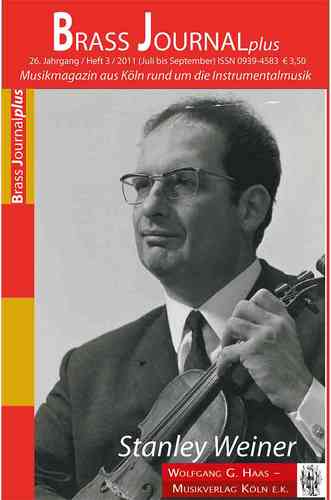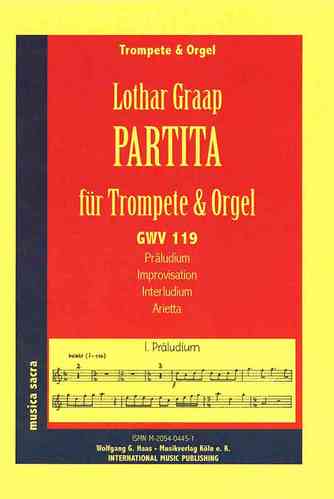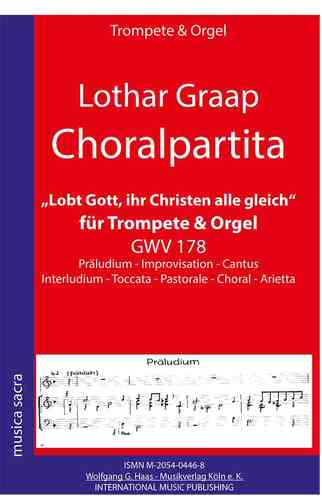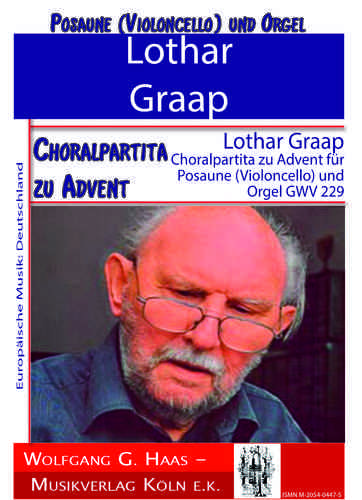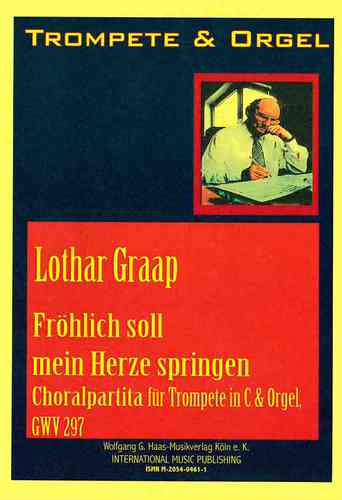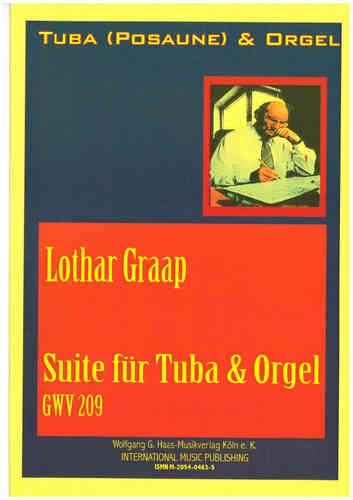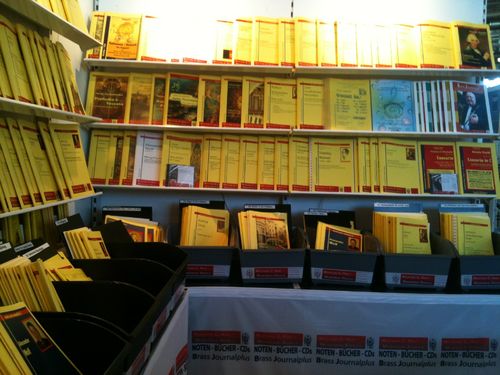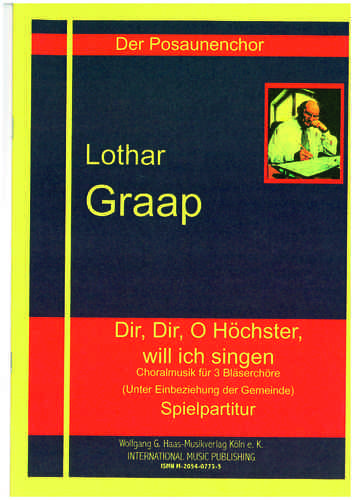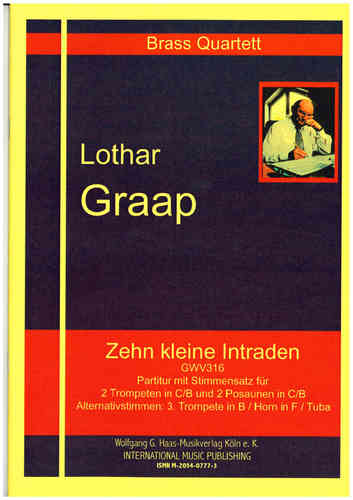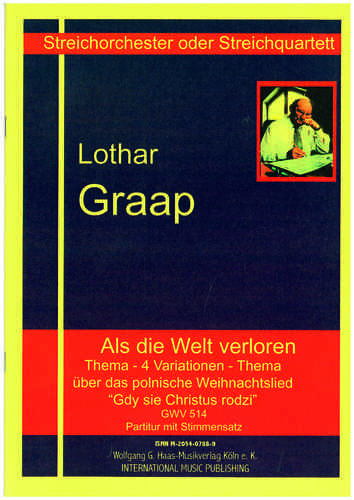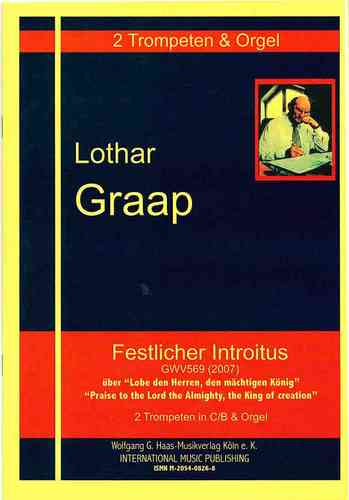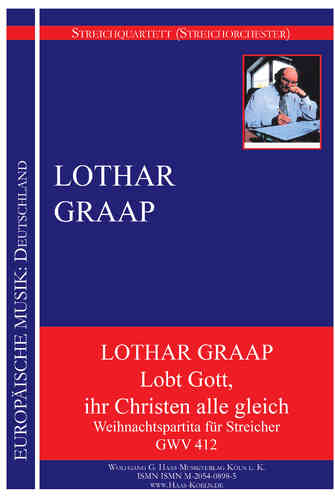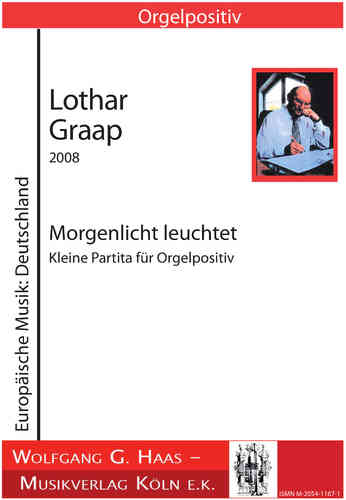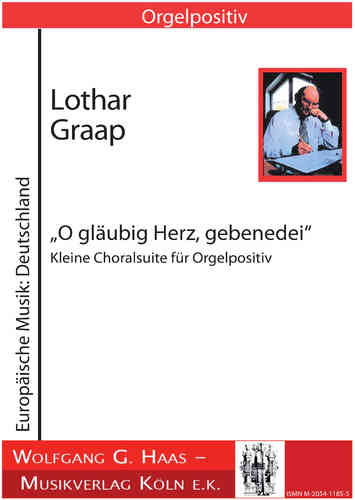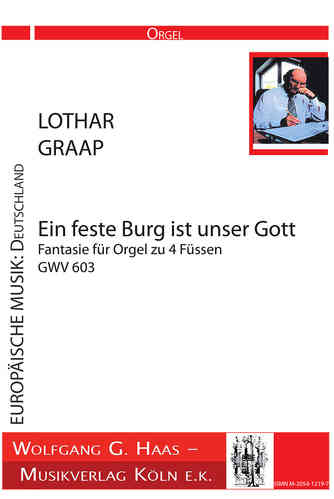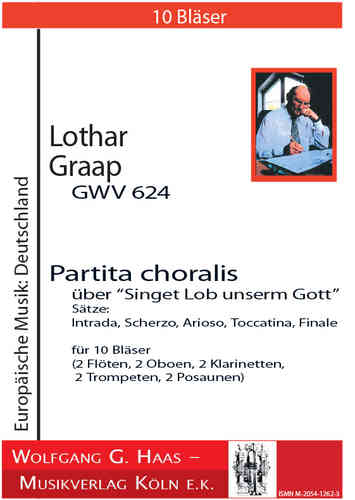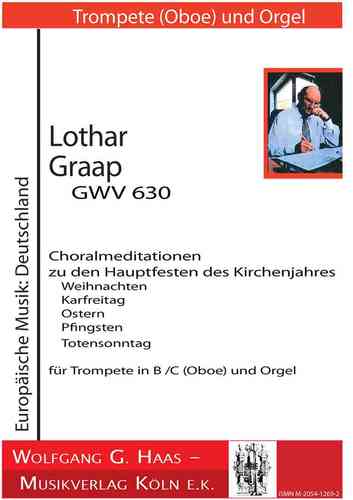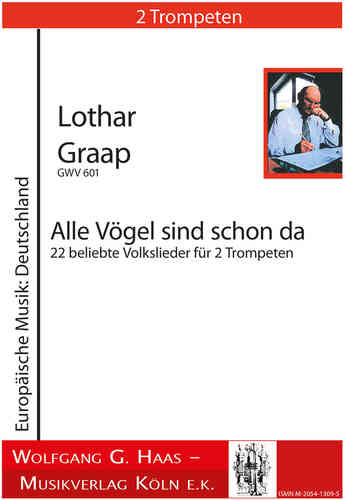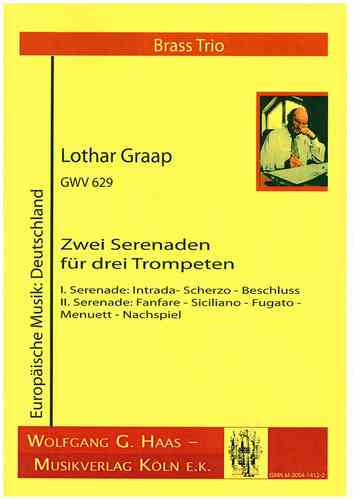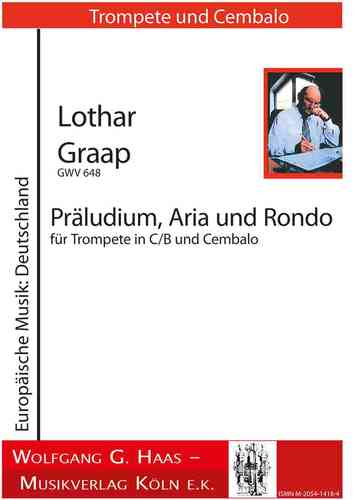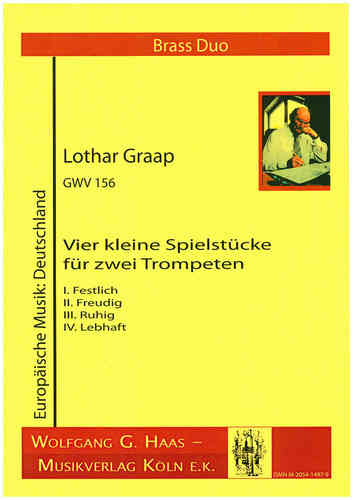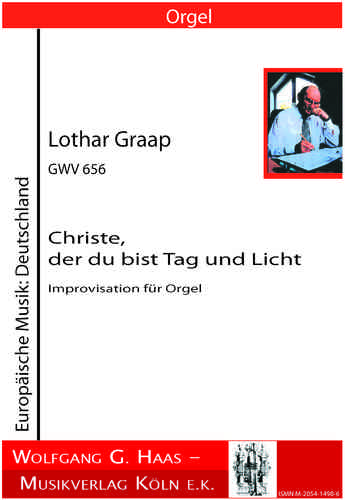SHEET MUSIC Graap_Lothar_1933
Graap_Lothar_1933

Lothar Graap was born in Schweidnitz (Silesia) on June 15th 1933. After his studies at the Görlitz academy of music (1946-1950) he continued to study at the Görlitz academy for church music with Eberhard Wenzel (theory and composition) and with Horst Schneider (organ) finishing with a "B-level" degree (1950-1954). From 1954 to 1956 he was employed as church musician in Niemegk (belonging to the Kreis Belzig, Germany). From 1957 to 1998 he was cantor at the "Klosterkirche" (claustral church) in Cottbus where he founded the "Ökumenischer Oratorienchor" (Ecumenical Oratory Choir) and where he organized more than one thousand ecumenical organ vespers. In 1975 he achieved an "A-level" degree and in 1981 he was appointed "Kirchenmusikdirektor" (director of church music). Having trained church musicians for a long time, Graap assumed the education in organ playing at the Cottbus academy of music from 1991 to 1998. In 1998 he was awarded the "Ehrenmedaille der Stadt Cottbus" (price of merit of the town of Cottbus). In 1998 he retired and moved to Schöneiche near Berlin where he still lives today.











